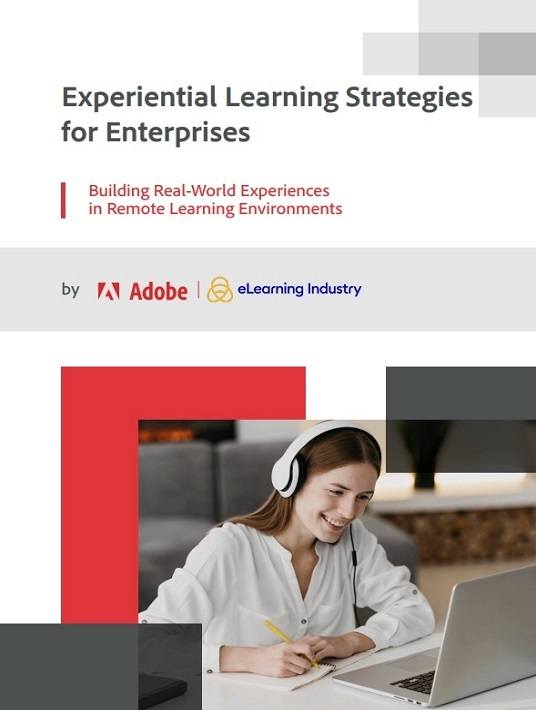Beyond The Basics: Benefits Of Peer Learning And Tips To Implement
Peer learning is a strategy used more and more in educational and professional environments. It focuses on the idea of knowledge sharing and learning by teaching others. It is a training strategy that yields great results, as it requires active engagement in the learning process. Let us discuss the main benefits of peer learning, as well as a few resources you can use to implement it in your organization.

4 Benefits Of Using Peer Learning In Virtual Training
1. Increases Knowledge Retention
Passive online learning is largely responsible for employees going through online training courses that end up adding little to no value to their professional development. However, as a form of active learning, online peer-to-peer learning goes a long way in terms of knowledge retention. When employees are being trained in a collaborative environment, they are encouraged to discuss, analyze, and reflect on the concepts they are being introduced to. This way, they acquire a deep understanding of the training material and hold on to that knowledge for a longer period.
2. Promotes Employee Engagement
Peer learning environments keep learners hooked by giving the power back to them. Instead of spending hours listening passively to an expert, employees become active participants in the learning process by sharing their own knowledge and learning from others. In addition, this process creates a safe environment for everyone to ask questions and challenge ideas. Naturally, employees find it easier to raise their concerns with co-workers than with management.
3. Builds A Sense Of Community
Remote training can be very isolating for employees, especially if collaboration was a part of your company’s daily routine. Thankfully, peer learning can help employees connect once again, no matter where they are. This is also important for new hires who have never experienced face-to-face communication with their co-workers. Technology bridges the gap among employees, supporting them in collaborating, communicating, exchanging ideas, and sharing knowledge. This way, employees can build stronger relationships and learn how to operate more effectively as a team.
4. Boosts Employee Performance
One of the reasons employees feel unmotivated and dissatisfied in the work environment is the feeling of not fitting in. But with peer learning creating a safe work environment that promotes collaboration, networking, and shared knowledge, this feeling subsides. As employees help each other learn, they, in turn, grow themselves. Specifically, they build their confidence and are more willing to take responsibility for their work and lead activities. Finally, their productivity increases and their performance improves because of their genuine interest in helping the team, and each of its members moving forward.
How Can You Implement Peer Learning?
By this point, you probably understand the various benefits of peer learning. But what is most important is figuring out ways you can successfully implement it in your business. Below, we suggest a few peer learning resources to help your team collaborate and boost their productivity.
Collaborative Onboarding Platform
Peer learning can be useful in numerous stages of an employee’s job, including onboarding. Allow new hires to feel immediately welcome and involved in organizational processes by creating a collaborative onboarding platform. This can function as a knowledge base that contains everything employees need to be productive from day one.
Group Reflection Discussion Boards
Even though daily tasks can be pressing, it is important for teams to also have some time for meaningful communication. Organize weekly or bi-weekly meetings where employees can reflect on their work and express their perspectives on various topics that affect the business as a whole. Such activities help employees become more effective communicators and develop their emotional intelligence.
Learning Management Systems
Any cloud technology platform that you use to keep remote employees connected can also be a fantastic tool for peer learning. Employees can use LMSs to share information, collaborate remotely, and communicate to solve issues in real-time.
Peer Performance Feedback
During peer review feedback, employees are called to evaluate each other’s performance. This process allows employees to get a deeper understanding of their work, as the feedback comes from people they are in daily contact with. Keep in mind that, for this activity to succeed, employees must offer constructive criticism and be open to feedback.
Peer-Led Training Courses
Although it might sound like it, this activity does not aim at peers taking over the training process entirely. Instructors are still necessary, however, their role becomes more auxiliary as employees take the lead in some activities. Research shows that the more actively trainees are involved in the training process, the more engaged they become and the more information they retain.
Conclusion
In this article, we talked about the importance of peer learning to make online corporate training more seamless and effective for your employees. Using the resources we mentioned, you can help create a knowledge-sharing community within your organization, which will encourage employee development and boost performance.
Download the eBook Experiential Learning Strategies For Enterprises: Building Real-World Experiences In Remote Learning Environments today to launch programs that leave a lasting impression and maximize ROI.










